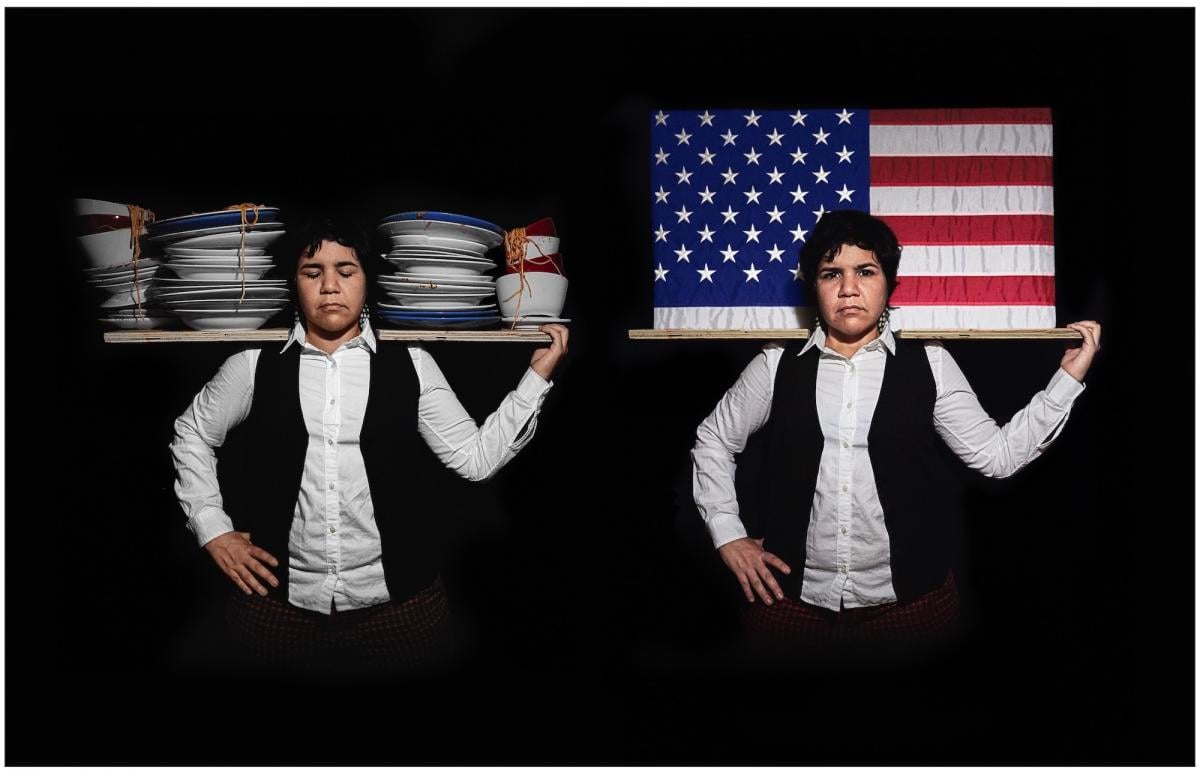
Aspiring artists looking to break into the art world often hear a warning: “Don’t quit your day job.” But a new show at the Blanton Museum of Art at the University of Texas at Austin proves that even some of the world’s most successful artists have relied on other jobs to make ends meet—and that those day jobs can sometimes prove key to their central practice, rather than distractions from their primary calling.
Featuring 75 works by major U.S. artists including Mark Bradford, Jeffrey Gibson, Jeff Koons, and Barbara Kruger, “Day Jobs” will be the first major exhibition to address the impact that day jobs have had on art history—demonstrating that while the gig economy might have seemed born of the 2010s, the side hustle is actually nothing new for artists.
Before he became a pioneering California Light and Space artist, for instance, Larry Bell was a young painter working by day at a commercial framing shop in Venice Beach in the 1960s. Filling customer orders, Bell was one day struck by the beauty of the light hitting a pane of glass in a metal frame. A totally new direction for his work was born, and a burgeoning art movement.
The jobs represented in the show are many, and wide-ranging. Some have an obvious connection to the art world—Andy Warhol, of course, got his start as a fashion illustrator. Other related careers featured in the show include graphic design, billboard painting, and furniture making.
Nate Lewis, Signaling XXIII (2020). Collection of Suzanne McFayden. Photo courtesy of the artist and Fridman Gallery, New York.
But artists have also worked at major companies such as Ford Motors and IKEA, and held demanding jobs such as ICU nurses and high-powered lawyers. Did you know, for instance, that Jeff Koons was once a Wall Street commodities trader? “Day Jobs” also highlights less glamorous careers, with artists who have moonlit as dishwashers, janitors, and nannies.
Though these roles may appear to have nothing in common, exhibition curators Veronica Roberts (the Blanton’s former curator of Modern and contemporary art, and now director of California’s Cantor Arts Center at Stanford University) and Lynne Maphies (a former curatorial assistant at the Blanton) make the case they all can provide unexpected creative inspiration for the artists who hold them.
Fred Wilson, Grey Area (Brown version), 1993. Collection of the Brooklyn Museum, bequest of William K. Jacobs, Jr. and bequest of Richard J. Kempe, by exchange 2008. Photo: ©Fred Wilson, courtesy of Pace Gallery.
A day job can push artists in new directions as they learn about a new industry, get exposed to new materials or working methods, or even just shift their studio hours—Howardena Pindell was a figurative painter, until a curatorial assistant job at New York’s Museum of Modern Art meant she could no longer make art during daylight hours, prompting her to experiment with hole-punched paper scraps from her desk job, creating unique abstract works.
Art museums, it turns out, often employ artists—at MoMA alone, Sol LeWitt was a receptionist, Dan Flavin was an elevator operator, and Robert Ryman was a security guard.
Sara Bennett, TIANA, 25, in the library at Bedford Hills Correctional Facility (2019). Photo: ©Sara Bennett, courtesy of the artist.
Rejecting the myth of the lone genius working alone in the art studio, art springing forth from the studio whenever inspiration strikes, “Day Jobs” looks at the ways that economic pursuits can help fuel the creation of great art. Could it be that quitting the day job to make art full-time isn’t the ultimate goal?
“Day Jobs” will be on view at the Blanton Museum of Art, the University of Texas at Austin, 200 E. Martin Luther King Jr. Boulevard., Austin, Texas, February 19–July 23, 2023.